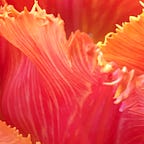3 Ideas for Low-Maintenance Planting in Your Garden Nature Sanctuary
It’s December in England as I write this, so there’s not much flowering in most gardens. But these 3 low-maintenance planting suggestions will give you and the bees a head start for when the warmer weather arrives.
1. Plant Bee-Friendly Flowers
These bright and beautiful plants are all incredibly easy to look after and will revitalise any garden space:
- Hardy geranium — any variety, but make sure it is a hardy geranium and not a pelargonium. Geraniums have very long flowering seasons and seem to be enjoyed by most bees and pollinators. There is a huge variety of vibrant colours to choose from.
- Lavender — scented leaves and evergreen, lavenders are a fantastic choice for a tiny garden. Choose from white, pink, lilac, English or French varieties. They bring year round interest and the bees love them.
- Rosemary — another winning scented leaf evergreen plant. Check the plant label in the pot to make sure that you buy a fully hardy variety. If rosemary is grown in a sheltered place in the UK, it can start flowering in December and go right through to April. Bees will adore this early season source of nectar.
Buy small plants (they are cheaper and will grow fast). Plant them with good quality compost and a handful of grit to aid drainage. Pop them in a pot a little bigger than the one they were in before. More on planting in future posts…
Rosemary flower in December. This pot is on an old, wobbly wooden table, fairly sheltered and in any scant rays of winter sun. Typically this rosemary will flower from December/January through to April.
Lavender is a magnet for many species of bee. Planted with grit mixed into the compost to aid drainage, they will flower for months on end. Scented, evergreen foliage is a bonus.
2. Plant a (small) native tree
Native trees support huge ecosystems. Any tree is worth considering, but by planting a native tree you’ll be maximising the number of species who’ll benefit from it.
Take a look at The Woodland Trust
They offer a wide range of native trees and valuable information on how to choose one which will thrive in your garden.
If you have a small outside space, consider planting a tree in a large container. Or you could plant a mini-forest in big pots.
I have planted a tiny crab apple hedge in this way:
3 x little saplings in each big pot x 3 = 1 micro hedge.
Crab apples are universal pollinators. Which means that bees attracted to your crab apple will transfer its pollen to any nearby fruit tree or bush and increase pollination rates. You get to enjoy the beautiful blossom and more fruit can be created — winner!
3. Create a thicket
By thicket, I mean an area of the garden that is a combination of plants and trees which grow together to form a strong and valuable shelter for wildlife. Birds will nest in a thicket and be protected from snow and storms in the winter.
If you can manage to plant a small native tree, ideally in a corner, then that is an excellent place to start.
Underneath the tree, you could plant a climbing honeysuckle and let it scramble through the branches. There are many varieties of honeysuckle, all with gloriously rich scents.
Open-flowered roses work well here too. Bees can collect nectar from varieties such as:
- Rosa Rugosa Alba — white with golden stamens and a delicious scent
- The Generous Gardener — pale pink, repeat flowering climbing rose, gorgeously fragrant and highly valued by huge bumble bees
- Ballerina — light pink, repeat flowering small shrub rose, easily grown in a large pot
Threading the growing shoots of a honeysuckle and a rose through the branches of a tree will quickly form a fragrant and beautiful thicket. Wildlife areas in a garden can look stunning!
Generous Gardener and Crocus Rose intertwined with honeysuckle (Lonicera periclymenum ‘Graham Thomas’). These 3 plants flower (in Somerset) for around 8–9 months of the year and provide valuable protection for all our garden visitors.
By using these ideas for low-maintenance planting, you will achieve success in your garden very easily — it will be a vibrant and thriving nature sanctuary before you know it!
